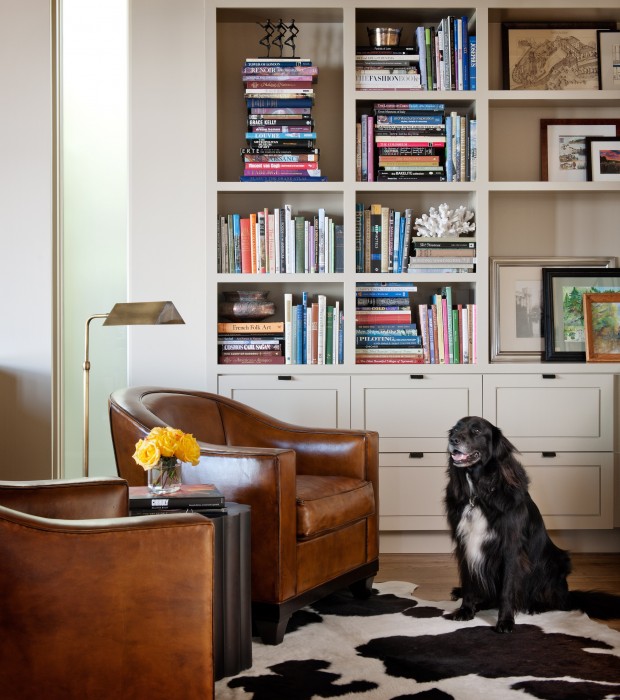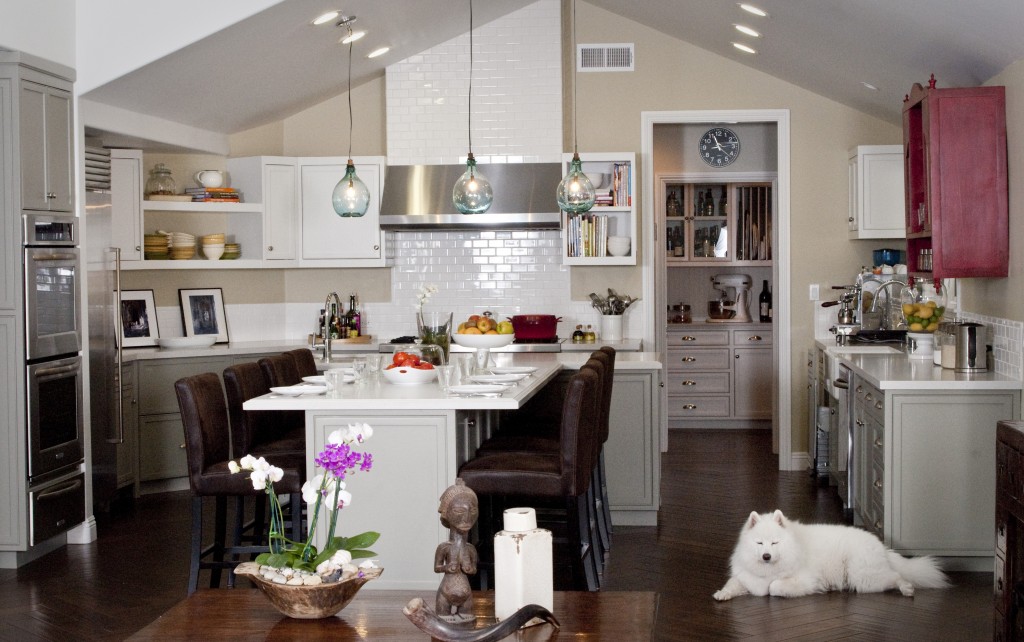This article originally appeared on Porch.com
Written by Holly King

Bringing a pet into your home can be a source of great joy, but it’s also a huge responsibility. Not only do you have to feed these furry fellas, take them out for exercise, and bring them to regular vet screenings, you are also in charge of their safety. Nobody wants their little ones escaping and living out their own version ofHomeward Bound. That kind of adventure doesn’t always end as well as it does in the movies!
Use these helpful tips to ensure that you’re actively guarding all of your family members from harm, including your four-legged friends.
1. Hide Your Hazards
Photo courtesy of NB Design Group
Dogs, cats, and just about any animals are like babies – they’re notorious for putting anything they can get their paws on into their mouths. That’s why it’s important to tuck away loose wires or cords that might be within their reach. If your pet bites into a wire or cord, they risk getting poisoned or electrocuted. Products like the Cable Turtle or other cord management tools are convenient ways to hide errant cords so your pet can’t get to them.
2. Avoid Slippery Situations
Photo courtesy of Gelotte Hommas
Animals, dogs in particular, have a tendency to get excited and tear through the house. If you’re living in a home with wood, tile, or laminate flooring, you’ve probably seen your dog turn the floor into a slip-n-slide in his eagerness to greet you. To help avoid falls and broken furniture, consider placing area rugs on large areas of open flooring. Your dog will be able to run happily through the house without going face-first into a wall.
3. Install a Security System
Photo courtesy of Architect Mason Kirby Inc.
Home security systems aren’t just for humans anymore. In fact, there are some systems on the market that can recognize the difference between animals and people. Pet-immune motion sensors work by recognizing differences in infrared body temperatures between humans and animals.
There are some great products coming soon that will even recognize the habits of the pets in your home and know when to record and when not to, like the smartphone-operated Butterfleyeand Canary home security systems. The Canary security system not only checks for intruders, but also monitors air quality in your home, so you know that you and your pets are safe from things like carbon monoxide poisoning.
4. Purchase a Pet Emergency Kit
Photo courtesy of NB Design Group
When preparing your home for a natural disaster or other emergencies, don’t forget your pets! Pet emergency kits can be bought or easily put together on your own. The ASPCA provides a handy pet emergency kit checklist. Some of the items include:
- Canned food
- Enough water to last for a week
- Blankets and storage containers
- Litter trays for cats and other small pets
- Medical/veterinary histories for your pets
- A pet first-aid kit in case you need to patch small injuries
The ASPCA also notes that it’s important to get a Rescue Alert Sticker. You’ve probably seen these before; they’re the stickers you place in your window to let emergency personnel (like firefighters and police) know that there are animals inside in need of rescue.
5. Provide Proper Fencing
Photo courtesy of By Design Interiors, Inc.
A lot of homeowners fail to consider proper fencing when getting their first pet, even if they aren’t bringing a dog into the home. In fact, it’s quite easy for cats and other small animals to get past a normal fence if they manage to get out of the house.
Have your fence placed deep into the ground so your pet can’t dig underneath and escape. You might also consider extending the video surveillance system that pairs with your security system to include the length of the yard, just to keep an eye on pets and any threats trying to get in.
6. Secure Your Cabinets
Photo courtesy of HOUSEplay Interiors
Animals are nosy creatures (kind of like humans!), and they’ll go rooting around in your cupboards for food if you give them the chance. Add cabinet doors that lock into place to prevent them from getting into harmful chemicals and toxic foods. Be particularly careful about what you allow your pets to eat, because many foods people munch on are deadly for pets. Check out this helpful list of foods your pet shouldn’t eat if you’re not sure what’s good and bad for Fido.
Keep these tips in mind when bringing a new pet home to be part of the family, and you’ll feel more secure knowing everyone will be much safer if you’re away.
Tom Image Credit By Design Interiors, Inc.
Have you taken all of these steps to keep your furry family members safe?
 Porch.com is the free home network that connects homeowners and renters with the right home service professionals.
Porch.com is the free home network that connects homeowners and renters with the right home service professionals.
 Facebook
Facebook
 X
X
 Pinterest
Pinterest
 Copy Link
Copy Link









